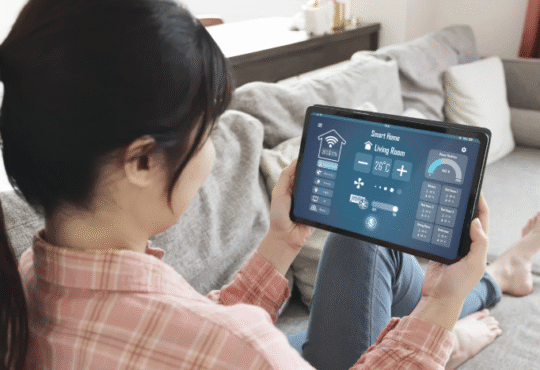
Unveiling the Future: Exploring Emerging Trends and Innovations
In a rapidly evolving world, staying updated with the latest trends and innovations is crucial. As technology continues to advance at an unprecedented pace, it’s essential to understand the emerging trends that shape our future. This blog will take you on a journey to explore the most exciting developments and innovations that are transforming industries and paving the way for a new era.
Trend 1: Artificial Intelligence and Machine Learning
Artificial Intelligence (AI) and Machine Learning (ML) have become household terms in recent years. AI refers to the simulation of human intelligence in machines, enabling them to perform tasks that traditionally required human intelligence. ML, a subset of AI, focuses on algorithms and statistical models that enable machines to learn and improve from experience.
The impact of AI and ML spans across various industries, from healthcare and finance to manufacturing and marketing. AI-powered chatbots are revolutionizing customer service, while ML algorithms analyze vast amounts of data to uncover valuable insights. The potential for AI and ML is boundless, with applications ranging from autonomous vehicles to personalized medicine. As these technologies continue to advance, we can expect even more exciting developments and possibilities in the future.
Trend 2: Internet of Things (IoT)
The Internet of Things (IoT) has rapidly transformed the way we interact with technology. IoT refers to the network of interconnected physical devices, vehicles, appliances, and other objects that collect and exchange data. These devices are embedded with sensors, software, and connectivity, enabling them to communicate and interact with each other.
The impact of IoT is evident in various sectors. In healthcare, IoT devices monitor patient health, improve diagnosis accuracy, and enable remote patient care. In transportation, IoT applications enhance traffic management and enable smart cities. Smart homes equipped with IoT devices offer convenience, energy efficiency, and improved security.
However, the future of IoT is not without challenges. Security concerns and data privacy issues need to be addressed to ensure widespread adoption. Additionally, the integration of IoT devices across different platforms and standards remains an ongoing challenge. Nonetheless, the potential benefits and advancements in IoT technology make it an exciting trend to watch out for.
Trend 3: Blockchain Technology
Blockchain technology gained prominence with the rise of cryptocurrencies like Bitcoin. However, its applications extend far beyond digital currencies. At its core, blockchain is a decentralized, distributed ledger that records transactions across multiple computers. It offers transparency, security, and immutability, making it suitable for a wide range of industries.
Beyond cryptocurrencies, blockchain has the potential to revolutionize sectors such as finance, supply chain management, and healthcare. In finance, blockchain can streamline transactions, reduce fraud, and enhance transparency. In supply chain management, it can enable end-to-end traceability, ensuring the authenticity and integrity of products. In healthcare, blockchain can secure patient data and facilitate interoperability between different healthcare providers.
Despite its immense potential, blockchain technology faces challenges such as scalability, energy consumption, and regulatory frameworks. However, ongoing research and development efforts are addressing these concerns, making blockchain a transformative trend with significant future implications.
Trend 4: Augmented Reality (AR) and Virtual Reality (VR)
Augmented Reality (AR) and Virtual Reality (VR) are immersive technologies that blend the digital world with the physical world, providing engaging and interactive experiences. AR overlays digital information onto the real world, enhancing our perception, while VR creates a completely simulated environment.
AR and VR have already found applications in gaming, education, healthcare, and more. In gaming, AR enhances the gameplay experience by integrating virtual elements into the real world. In education, AR and VR offer immersive learning environments, enabling students to explore concepts in a more interactive way. In healthcare, VR is used for surgical training and pain management.
The future of AR and VR holds immense potential. Advancements in hardware and software are making these technologies more accessible and realistic. The integration of AR and VR with other emerging trends, such as AI and IoT, opens up new possibilities for applications in diverse industries.
Takeaway
As we explore the emerging trends and innovations shaping the future, it becomes evident that we are living in a time of immense technological transformation. Artificial Intelligence, Internet of Things, Blockchain, and Augmented/Virtual Reality are just a few examples of the exciting developments that will shape our lives in the years to come. Staying informed and embracing these trends will be crucial for individuals and businesses seeking to thrive in the future.









